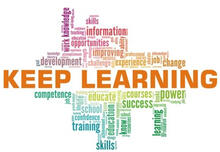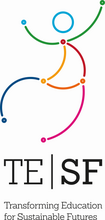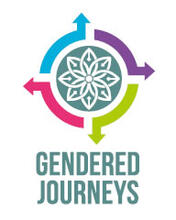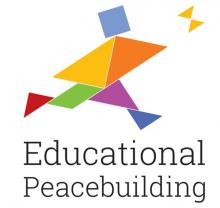The growing mobility of people across national borders has resulted in demographic, social, and cultural change that creates new opportunities as well as new challenges for lifelong learning. However, there is surprisingly little research and analysis of the relations between international migration and lifelong learning. In this blog I would like to bring up some emerging issues that need to be discussed in relation to the impact of transnational migration on lifelong learning, especially in the UK context.
A good number of research has been done to inform policy makers and specialized users about the current and changing causes, patterns, and consequences of international population mobility and movements affecting the UK and Europe. The Centre for Research and Analysis of Migration (CReMA) is one of these communication platforms where everybody interested in migration issues in the UK and Europe could find rich resources. De-skilling, underemployment and downward social mobility is a common experience of many migrants in the process of their adaptation to new societies. This also concerns labour mobility within the European Union, which has been my area of interest. Political and economic integration within the EU encourages the free movement of workers and their families among EU member countries. EU migrants continue to be a fast rising group in the UK migration statistics. Registrations of new national insurance numbers for adults entering Britain rose by 19% in 2013 with the highest increases for these coming from Poland, Italy, Spain and Portugal.
In the UK, similarly to the other EU member states that opened their labour markets to the other European citizens, the lack of transferability of cultural capital (e.g. formal qualifications; knowledge about the functioning of the education and career system; and language barriers) puts migrants in a very difficult position in societal competition. Although the UK policy discourse focuses on immigration control, limiting unskilled and attracting and retaining highly-skilled migrants, as well as foreign students, who are a huge economic asset, it is nevertheless the case that recent EU migrants (characterized as young and well-qualified), are working largely in unskilled or low-skilled employment, in the service sector, industry, and agriculture.
This increasing mobility of people between European countries has important implications for educators, because it generates cultural and linguistic diversity in educational environments. Although increasing ethnic and cultural diversity is not a new phenomenon, it remains the subject of controversy in education policy and practices. Scholars who recently published on the subject (see edited by Shibao Guo in 2010 special issue of International Journal of Lifelong Education – Lifelong Learning in the Age of Transnational Migration, published also as a book in 2013) argue that lifelong learning has failed to integrate cultural differences and diversity into education and has become instead a means for migrants’ assimilation into the host society. Guo (2010) criticizes lifelong learning for becoming a barrier and a gatekeeper rather than facilitator to migrants’ adaptation. Through processes of de-skilling and getting new qualifications, in many countries lifelong learning acts as a means of social control and subordination of migrants into the dominant values of the host society.
We might ask then, how can lifelong learning best facilitate migrant’s adaptation in a new society? Guo (2010) suggests working with the notion of re-cognitive social justice in re conceptualising lifelong learning. Lifelong learning should recognize people’s transnational flows and multiple affiliations in the country of origin and host country. It will be definitely be useful to observe how transnational networks are formed through the process of migration and adaptation. These networks impact on lifelong learning process. Transnationalism means that the migrants keep their mobility options open. Instead of permanent settlement and assimilation, migrants maintain culture and linkages with the home country while they learn to acquirer the life style and the culture of the new society. The transnational perspective has important implications for educational systems that address the needs of new migrants populations. The connections between social capital and lifelong learning are particularly important here because the knowledge, skills and behaviours acquired through social networks (within transnational and local communities) create foundation for future learning. In that sense lifelong learning goes beyond institutional learning.
The ability to speak the host language and to communicate with a diverse range of people is particularly important not only in getting better access to the host country’s labour market but also in gaining a fuller understanding of, and confidence in, host society. In my study of Polish young people in Scotland’s schools (2014) the challenge of acquiring English served to mask the other skills, knowledge and aspirations of young migrants. Some teachers did not draw on the migrant students’ previous educational experiences due to belief that this background was limited. This lack of background information can foster inadvertent prejudice, and low expectations on the part of teachers. As a result, migrant pupils were not always effectively assessed, and were not been expected to perform to their potential. These may lead to misjudgement of the appropriate pace for learning for each student, and result in the failure to progress appropriately. This situation was particularly difficult for those who arrived in the country as teenager (12 years or older) who often failed to achieve in the English exam system. Once they have reached the age of 16, these pupils fall under the auspices of post-compulsory adult education, which provides vocational courses that are designed to prepare adults for entry into the workforce. ESOL teenagers are placed on course to improve their language levels, which must be done before they can proceed to vocational training. This strategy to place young people who have not completed their general education into general ESOL classes followed by an adult curriculum has been highly controversial (Cook 2008).
A number of examples could be added to the above one to show that the opportunities for academic learning are often restricted and absent from young migrants in the UK. It seems to be pretty obvious to suggest the states and communities should work together to develop coordinated lifelong learning policies and practices in assisting migrants with their adaptation to the host societies.
References
Cooke, M. (2008). “What we might become”: The lives, aspirations, and education of young migrants in the London area. Journal of Language, Identity, and Education, 7, 22–40.
Guo, S. (Ed.) (2013). Transnational migration and lifelong learning: Global issues and perspectives. London: Routledge.
Guo, S. (2010). Toward recognitive justice: Emerging trends and challenges in transnational migration and lifelong learning. International Journal of Lifelong Education, 29(2), 149-167.
Moskal, M. (2014). Language and Cultural Capital in School Experience of Polish Children in Scotland, Race, Ethnicity, Education. (Early Online Publication).
Sports brands | adidas garwen spezial white shoes - New In Shoes for Men
Discussion topics:
- Marta Moskal's blog
- Log in to post comments













Latest Comments